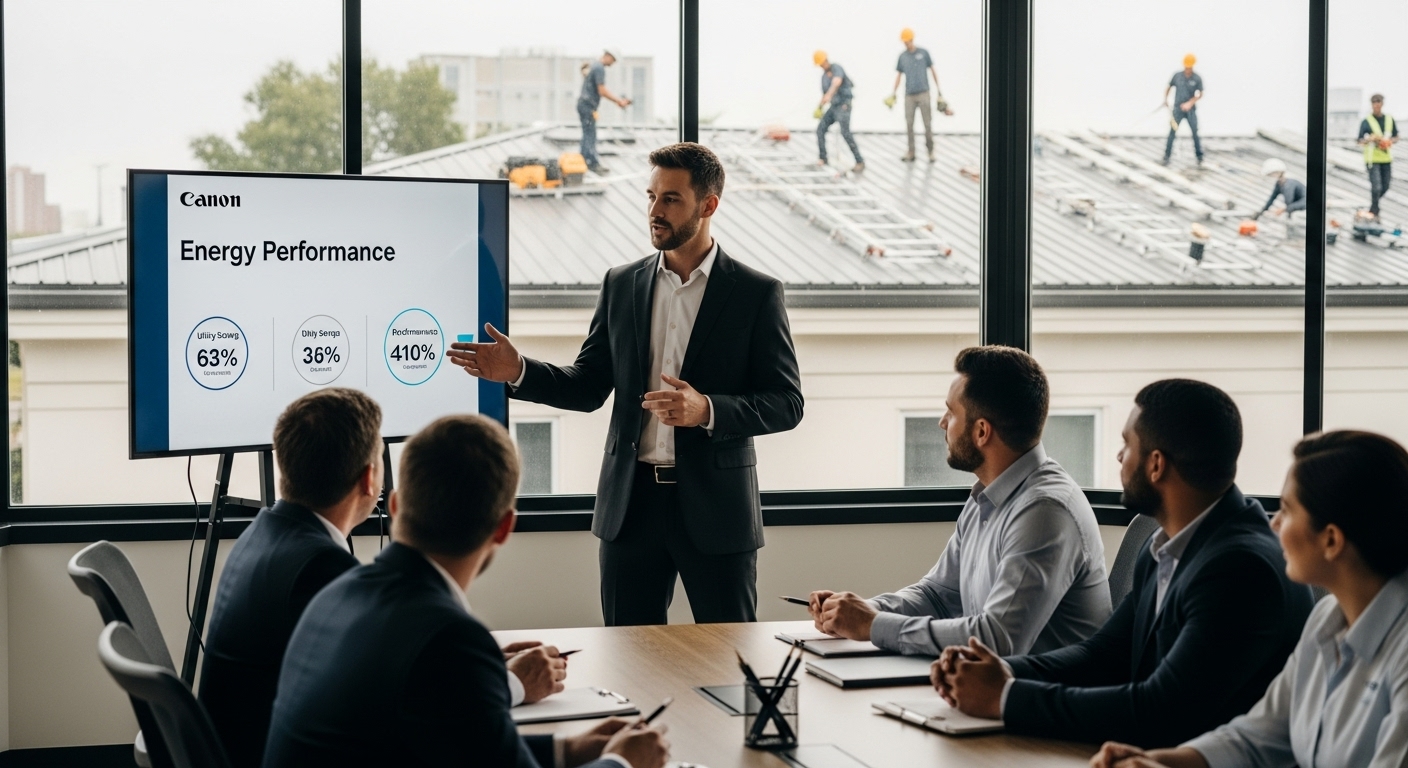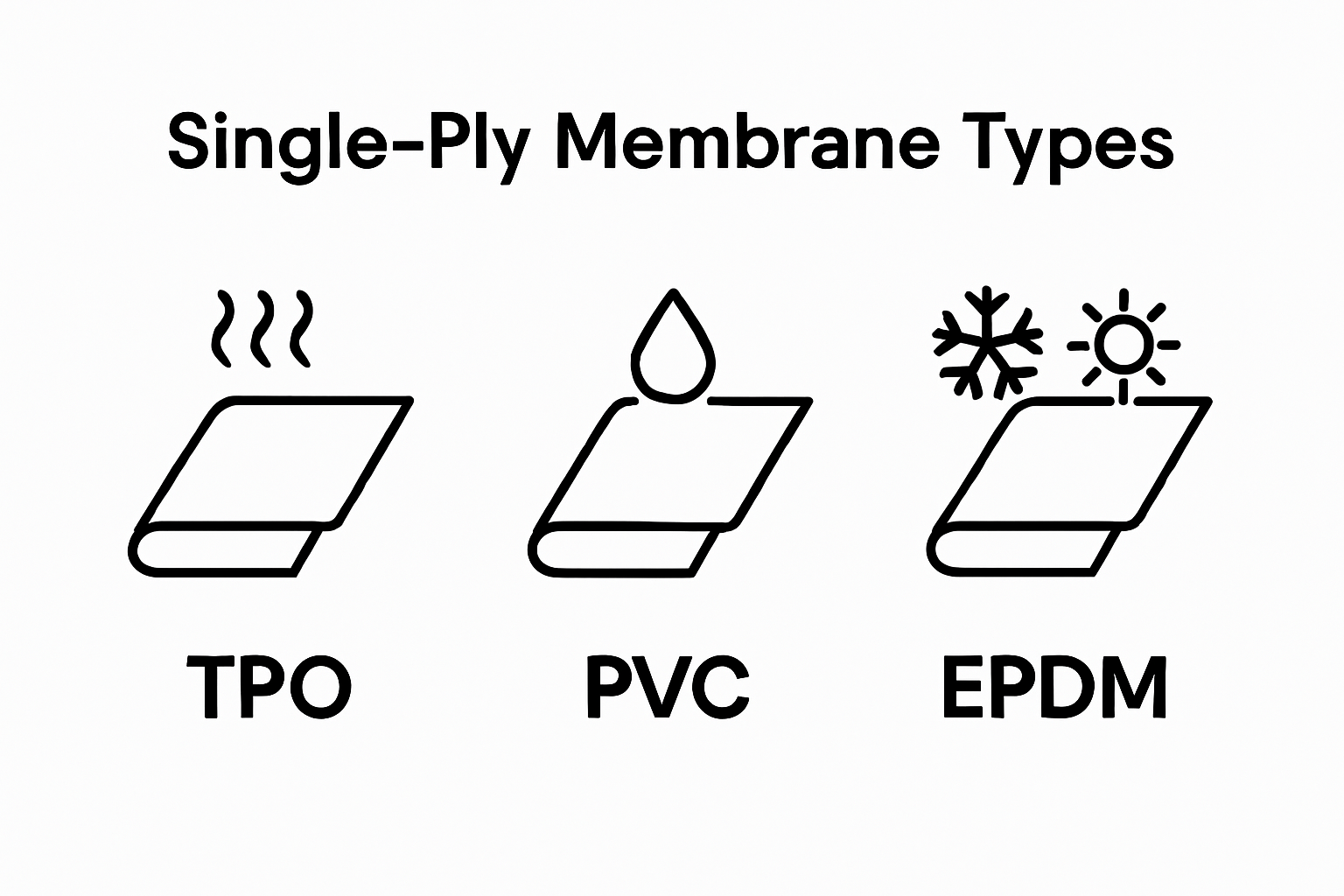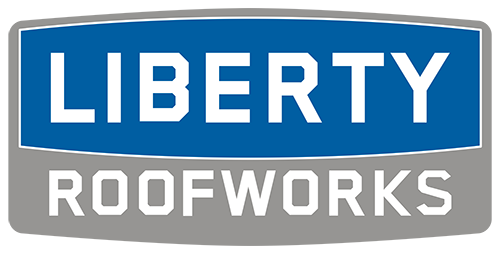Commercial roof replacement sounds like one of those expensive chores every business hopes to put off. The surprising part is a well-timed roof replacement can slash energy bills by up to 30 percent, making it much more than just a patch-up job. Turns out, ignoring an old roof could cost far more in lost efficiency and unplanned repairs than replacing it ever would.
Table of Contents
- What Is Commercial Roof Replacement And Why It Matters
- Common Reasons For Roof Replacement In Commercial Buildings
- Exploring Different Types Of Commercial Roofing Materials
- The Role Of Professional Contractors In Roof Replacement
- How To Assess The Need For Roof Replacement
Quick Summary
| Takeaway | Explanation |
|---|---|
| Roof replacement enhances energy efficiency | Upgrading roofing can lower energy costs by 25-40% through better insulation and reflective materials. |
| Watch for key replacement indicators | Signs like water damage and high energy costs indicate it’s time for a roof replacement. |
| Invest in quality roofing materials | Choose materials based on climate and structural needs to ensure long-lasting performance. |
| Pro hiring of contractors is essential | Professional contractors ensure adherence to safety standards and optimal installation techniques. |
| Comprehensive inspections are crucial | Regular visual and structural inspections help detect issues early, preventing larger problems. |
What Is Commercial Roof Replacement and Why It Matters
Commercial roof replacement represents a critical investment in protecting and maintaining business infrastructure. Unlike routine repairs, roof replacement involves completely removing the existing roofing system and installing a brand new one to restore full structural integrity and performance. Preparing for a comprehensive roof replacement requires understanding the nuanced requirements of commercial buildings.
The Fundamental Purpose of Commercial Roof Replacement
Every commercial roof has a finite lifespan, typically ranging between 15 to 30 years depending on materials, climate conditions, and maintenance history. According to the U.S. Department of Energy, roof replacement offers more than just surface-level protection. It represents an opportunity to enhance building efficiency, reduce energy consumption, and minimize long-term operational costs.
Key considerations for commercial roof replacement include:
- Protecting interior assets and equipment from potential water damage
- Maintaining building structural integrity
- Improving overall energy performance
- Preventing potential business interruptions caused by roof failures
Economic and Operational Implications
Beyond physical protection, commercial roof replacement delivers significant economic benefits. A strategic roof replacement can reduce energy expenses by up to 30% through improved insulation and reflective technologies. Business owners who proactively manage their roofing systems avoid costly emergency repairs and unexpected downtime.
Understanding when replacement becomes necessary involves monitoring several critical indicators: extensive water damage, multiple repair patches, visible structural deterioration, increased energy costs, and approaching the manufacturer’s recommended replacement timeline. By recognizing these signals early, businesses can transform a potential crisis into a calculated, strategic investment in their physical infrastructure.
Common Reasons for Roof Replacement in Commercial Buildings
Commercial buildings experience diverse roofing challenges that necessitate comprehensive replacement strategies. Understanding common commercial roof problems helps business owners recognize when their roofing system requires more than routine maintenance.
Structural Degradation and Material Wear
Roofing materials naturally deteriorate over time due to continuous environmental exposure. According to research from the National Roofing Contractors Association, commercial roofs typically experience significant structural stress from multiple factors:
- Consistent temperature fluctuations
- Ultraviolet radiation exposure
- Persistent moisture absorption
- Chemical interactions with pollutants
- Physical impact from debris and weather events
Chronic material breakdown compromises roof integrity, creating potential vulnerabilities that extend beyond superficial damage. When roofing materials reach approximately 70% of their expected lifespan, replacement becomes more economically prudent than continuous repairs.
Performance Efficiency and Energy Considerations
Modern commercial roof replacement transcends traditional protective functions. Contemporary roofing systems offer advanced thermal regulation, potentially reducing energy consumption by implementing reflective technologies and superior insulation materials. Strategic roof replacements can improve building energy efficiency by 25-40%, translating into substantial long-term operational cost savings.

Critical performance indicators signaling potential roof replacement include persistent internal temperature inconsistencies, increased utility expenses, visible water stains, and recurring maintenance requirements. Proactive replacement prevents catastrophic structural failures and minimizes potential business interruptions, transforming a necessary expense into a strategic infrastructure investment.
Exploring Different Types of Commercial Roofing Materials
Selecting the appropriate roofing material represents a critical decision for commercial building owners. The best roofing systems for commercial buildings depend on multiple factors including climate, budget, and specific structural requirements.
Single-Ply Membrane Roofing Systems
Single-ply membrane roofing has emerged as a popular choice for commercial applications. According to the U.S. Department of Energy, these lightweight and flexible systems offer remarkable performance characteristics. Three primary types dominate the market:

- Thermoplastic Polyolefin (TPO): Known for excellent heat-reflective properties
- Polyvinyl Chloride (PVC): Provides superior chemical resistance
- Ethylene Propylene Diene Monomer (EPDM): Delivers exceptional durability in extreme temperatures
Metal and Built-Up Roofing Options
Metal roofing systems represent another robust commercial roofing solution, offering exceptional longevity and minimal maintenance requirements. These systems typically utilize materials like steel, aluminum, and copper, which provide excellent thermal performance and structural integrity.
Built-up roofing (BUR) remains a traditional yet reliable option, consisting of multiple layers of bitumen and reinforcing fabrics. This approach creates a redundant protective barrier that can withstand significant environmental stress.
To help compare different commercial roofing materials discussed, the following table summarizes their main features and ideal use cases.
| Roofing Material | Key Features | Ideal Scenarios |
|---|---|---|
| Thermoplastic Polyolefin (TPO) | Excellent heat-reflective properties | Energy efficiency, warm climates |
| Polyvinyl Chloride (PVC) | Superior chemical resistance | Industrial or food-processing facilities |
| Ethylene Propylene Diene Monomer (EPDM) | Exceptional durability in extreme temperatures | Cold climates, variable conditions |
| Metal | Longevity, minimal maintenance | High durability needs, long lifespan |
| Built-Up Roofing (BUR) | Multi-layer protection, withstands temperature variation | Regions with extreme weather |
The Role of Professional Contractors in Roof Replacement
Professional contractors play a pivotal role in ensuring successful commercial roof replacement projects. Cleaning up from complex roof replacements requires specialized expertise and comprehensive understanding of roofing systems.
Technical Expertise and Safety Protocols
According to OSHA safety guidelines, professional contractors bring critical technical knowledge and rigorous safety standards to roof replacement projects. Their responsibilities extend far beyond simple installation, encompassing comprehensive project management and risk mitigation.
Key professional responsibilities include:
- Comprehensive site assessment and structural evaluation
- Precise material selection matching specific building requirements
- Adherence to local building codes and regulatory standards
- Implementation of advanced safety procedures
- Minimizing potential disruptions to business operations
Project Management and Technical Execution
Professional contractors transform complex roof replacement into a systematic, controlled process. Their expertise allows them to navigate challenges such as unexpected structural issues, material compatibility, and precise installation techniques. Advanced contractors utilize cutting-edge technologies like thermal imaging and digital diagnostics to ensure precise, efficient project completion.
Beyond technical skills, professional contractors provide critical value through project planning, risk management, and long-term performance guarantees. Their comprehensive approach ensures that commercial roof replacements are not just maintenance tasks, but strategic infrastructure investments that protect and enhance building performance.
How to Assess the Need for Roof Replacement
Determining when a commercial roof requires replacement demands strategic evaluation and professional insight. Understanding why to replace a roof helps business owners make informed infrastructure decisions.
Visual and Structural Inspection Indicators
According to the Colorado Roofing Association, several critical indicators signal potential roof replacement requirements:
- Persistent water pooling and drainage issues
- Widespread membrane cracking or splitting
- Significant granule loss on roofing materials
- Multiple repair patches across the roof surface
- Visible structural deformation or sagging
Comprehensive visual inspections reveal underlying structural vulnerabilities that might not be immediately apparent. Professional contractors utilize advanced diagnostic techniques like infrared thermal imaging to detect hidden moisture intrusion and insulation degradation.
The table below outlines the most common warning signs and performance indicators that suggest a commercial roof replacement may be necessary.
| Indicator | Description |
|---|---|
| Persistent water pooling | Ongoing drainage issues causing standing water |
| Membrane cracking or splitting | Visible surface cracks, splits, or seams opening up |
| Significant granule loss | Noticeable loss of protective granules on materials |
| Multiple repair patches | Numerous patched areas indicating repeated issues |
| Structural deformation or sagging | Visible dips, warping, or uneven roof surfaces |
| Increased energy/utility expenses | Rising energy costs due to declining insulation |
| Recurring maintenance requirements | Frequent repair calls and ongoing minor issues |
Financial and Performance Considerations
Beyond physical damage, roof replacement assessment involves evaluating long-term financial implications. Commercial roof replacement becomes economically strategic when repair costs consistently exceed 30% of potential replacement expenses. Performance metrics such as increased energy inefficiency, recurring maintenance needs, and potential business interruption risks further inform the replacement decision. Building owners must balance immediate financial constraints with long-term infrastructure sustainability, viewing roof replacement as a critical investment in operational continuity and asset protection.
Make Your Commercial Roof Replacement a Smart Investment with Liberty Roofworks
Protecting your business starts with understanding the signs and solutions of commercial roof replacement. If you are facing constant repairs, visible damage, high energy bills, or the stress of aging roofing systems, it is time to turn information into action. Your building’s value, your business continuity, and your long-term savings all depend on smart roofing decisions. Choosing the right partner is essential when it comes to issues like deteriorating materials, inefficient roofs, or concerns about operational safety.
Do not wait for a minor leak to grow into a major problem. Trust the local experts at Liberty Roofworks to deliver quality and peace of mind every time. We offer a full range of commercial roof repair and installation services, along with specialized solutions for modern commercial roofing systems. Contact us today to schedule your personalized consultation and secure a dependable roof for your business before the next storm or costly breakdown occurs.
Frequently Asked Questions
What are the signs that indicate it’s time for a commercial roof replacement?
Critical indicators include persistent water pooling, membrane cracking, significant granule loss, multiple repair patches, and visible structural deformation. Visual inspections, along with advanced diagnostics like thermal imaging, can help detect underlying issues.
How does commercial roof replacement impact energy efficiency?
A strategic roof replacement can improve building energy efficiency by 25-40%. Modern roofing systems incorporate reflective technologies and superior insulation that help minimize energy costs over time.
What types of roofing materials are best for commercial buildings?
Popular options for commercial roofing include single-ply membrane systems such as TPO, PVC, and EPDM, as well as metal roofing and built-up roofing (BUR) systems. The choice depends on factors like climate, budget, and specific building requirements.
How can professional contractors ensure a successful roof replacement?
Professional contractors bring technical expertise, project management capabilities, and adherence to safety protocols. They assess site conditions, select appropriate materials, and navigate challenges to deliver a well-executed roof replacement project.
